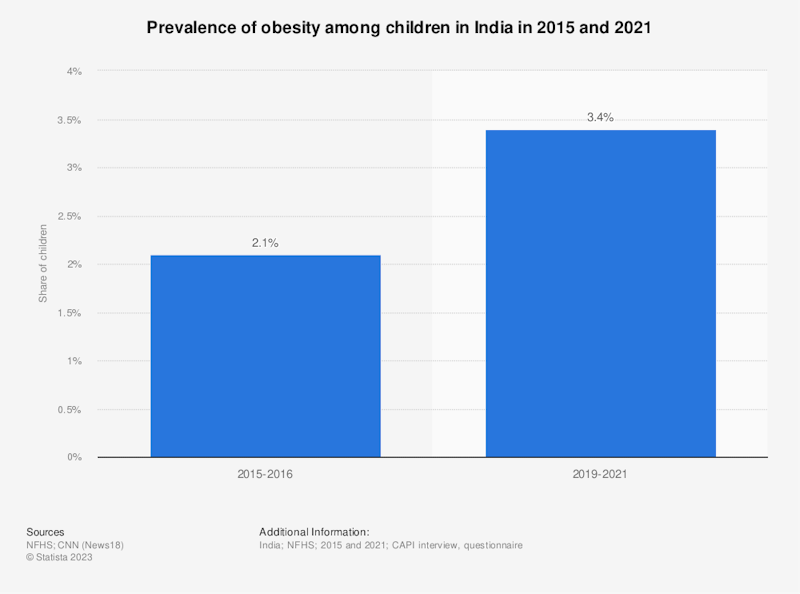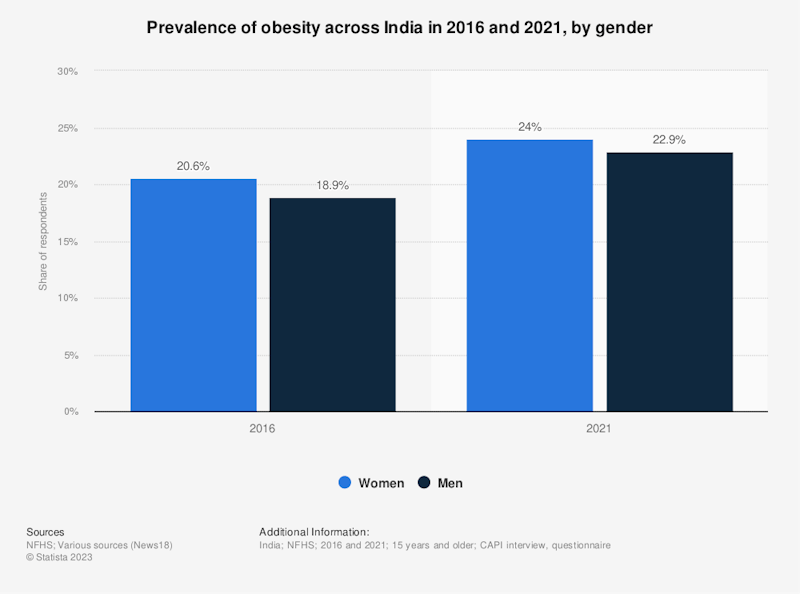In the News
India’s Obesity Time Bomb

6th November 2023
The negative externalities of obesity are increasingly a global problem, and this Bloomberg clip looks at how its affecting the Indian economy, where 1 in 4 Indians are now overweight or obese.
It's another complicated economic story, touching upon YED, and the effects of rising incomes in India, in a society more commonly associated with malnutrition. However, the solutions to obesity aren't straightforward, with India now having to look at increasing public health awareness, and hopefully reducing the divergence between MPB and MSB.

The phenomenon of a significant portion of the population being overweight or obese in a low-middle income country like India can be attributed to several complex and interrelated factors. While poverty remains high, the coexistence of obesity and undernutrition is not uncommon, a condition sometimes referred to as the "double burden of malnutrition." Here are some key factors contributing to this situation:
- Changing Dietary Patterns: Economic development and urbanization have led to shifts in dietary habits. Traditional, locally-sourced, and healthier diets are often replaced by highly processed, energy-dense, and low-nutrient foods. These processed foods are often cheaper and more accessible, making them an attractive option for lower-income individuals.
- Sedentary Lifestyles: Urbanization and industrialization have also led to increasingly sedentary lifestyles. Many jobs in urban areas involve desk work, and physical activity has decreased due to increased use of cars and public transportation. Leisure activities often involve screen time, reducing opportunities for physical exercise.
- Economic Disparities: While poverty remains high in India, there are significant economic disparities within the country. Some segments of the population have seen improved economic conditions and can afford a more varied diet and access to gyms or recreational facilities. As a result, they may be more prone to weight gain.
- Lack of Education: Limited education and awareness about nutrition and healthy lifestyles can contribute to unhealthy eating habits and a lack of physical activity. Lower-income individuals may not have access to information about the importance of a balanced diet and regular exercise.
- Social and Cultural Factors: Cultural and social norms may also play a role. In some cultures, a larger body size is associated with prosperity and well-being, leading to a preference for a higher body weight. This can influence food choices and attitudes toward weight.
- Food Environment: The availability of affordable, unhealthy food options is a significant factor. Street food, fast-food chains, and processed snacks are often more readily available and affordable than fresh, nutritious options.
- Stress and Mental Health: Economic and social stressors can contribute to poor mental health, which, in turn, may lead to unhealthy eating habits and weight gain.
- Healthcare Access: Access to healthcare services for preventive care and treatment of obesity-related conditions is often limited, especially for those living in poverty. As a result, many individuals may not receive adequate medical guidance to manage their weight.
- Food Marketing and Advertising: Aggressive marketing and advertising of unhealthy foods, especially to children and vulnerable populations, can influence dietary choices and encourage the consumption of high-calorie, low-nutrient foods.
It's important to note that the rise of overweight and obesity in a low-middle income country is a complex issue influenced by a combination of structural, economic, cultural, and individual factors. These factors interact in ways that can lead to a higher prevalence of overweight and obesity even in populations where poverty remains high. Addressing this challenge requires a comprehensive approach that includes education, policy changes, and efforts to make healthy food and physical activity more accessible and affordable for all segments of the population.

You might also like

Micromax overtakes Samsung in India smartphone sales
4th February 2015

India's most tariff-protected industries
6th November 2016
How India is embracing solar power
9th May 2017

How China plans to lead the computer chip industry
19th November 2019
Growth and Development Profile: Mozambique
Topic Videos

China and the Global Economy: 20 Years on from Accession to the WTO
12th December 2021

Disposable vapes to be banned for children's health
30th January 2024